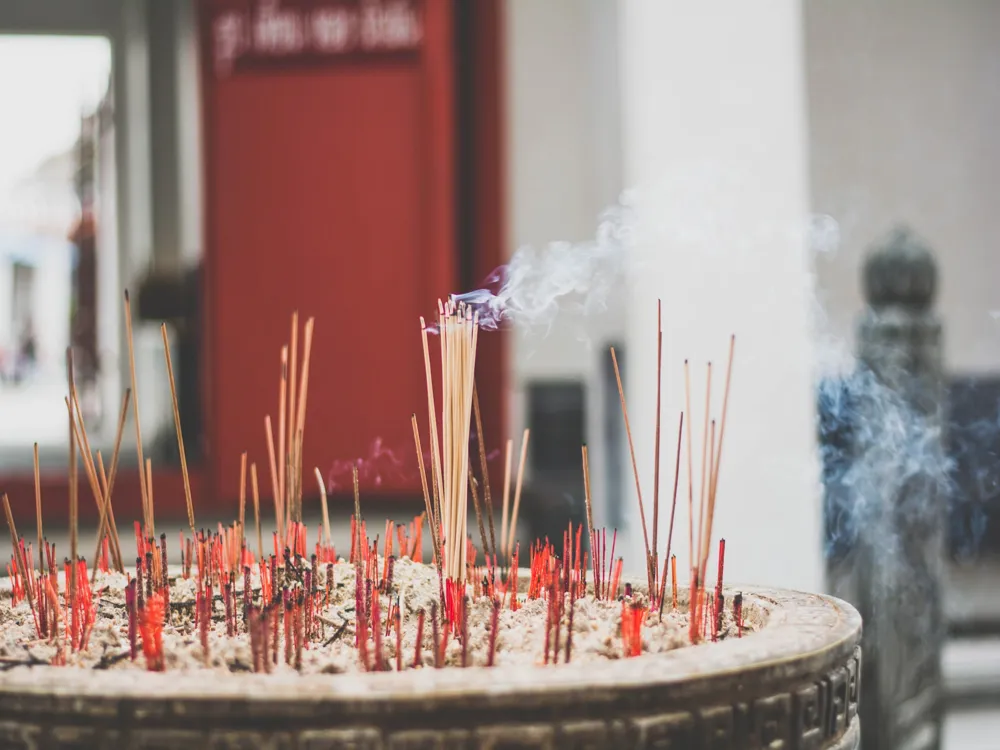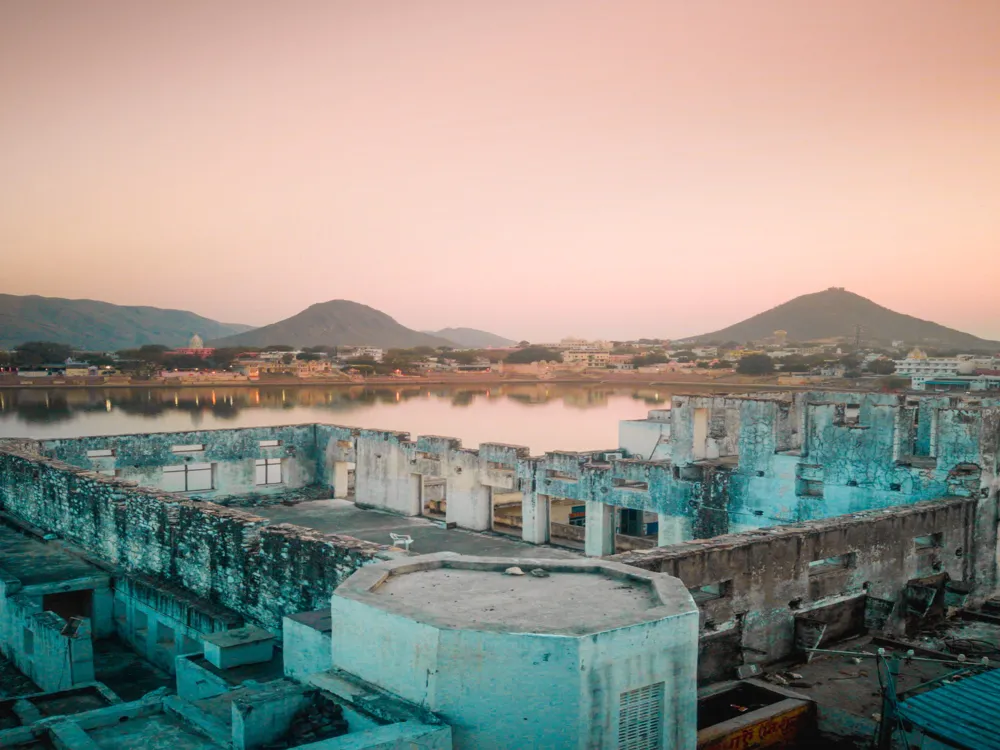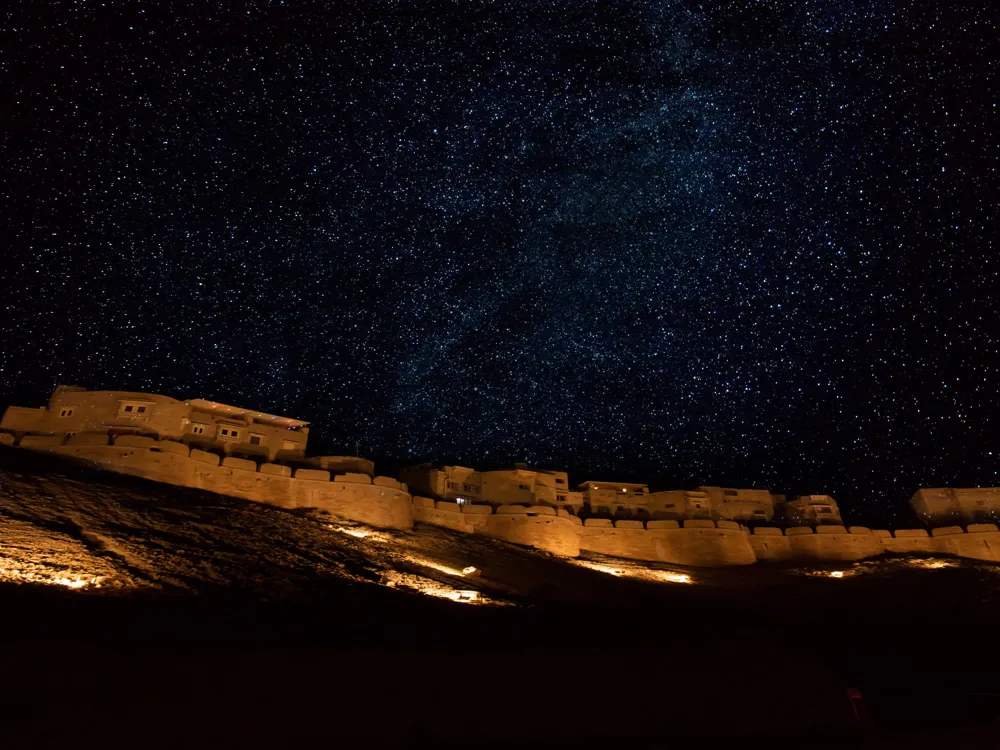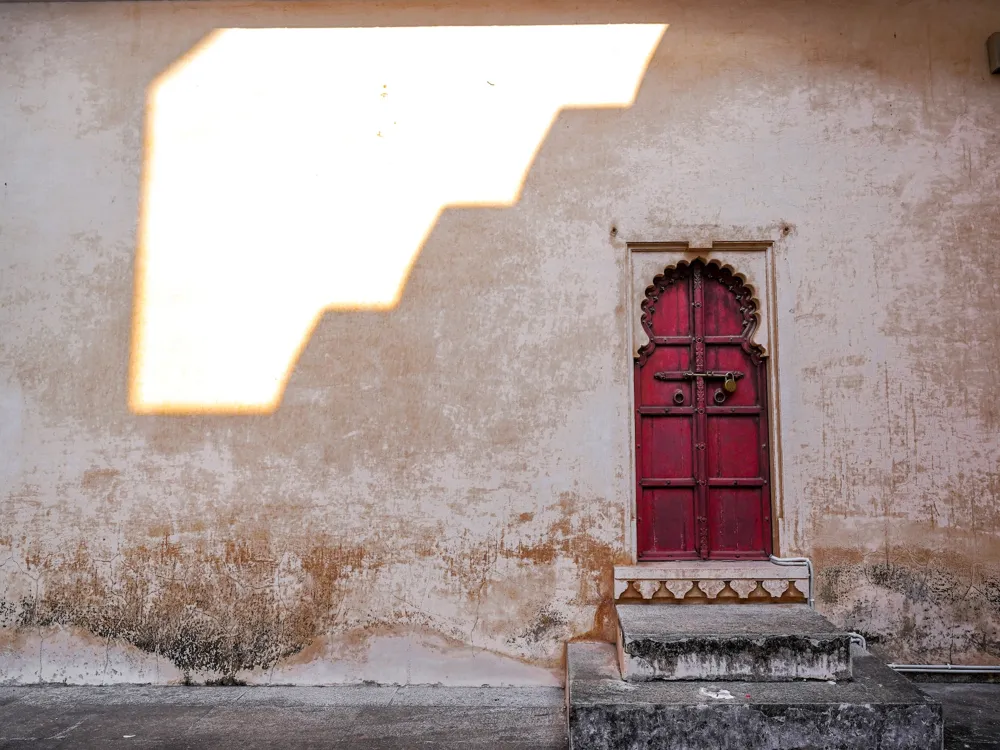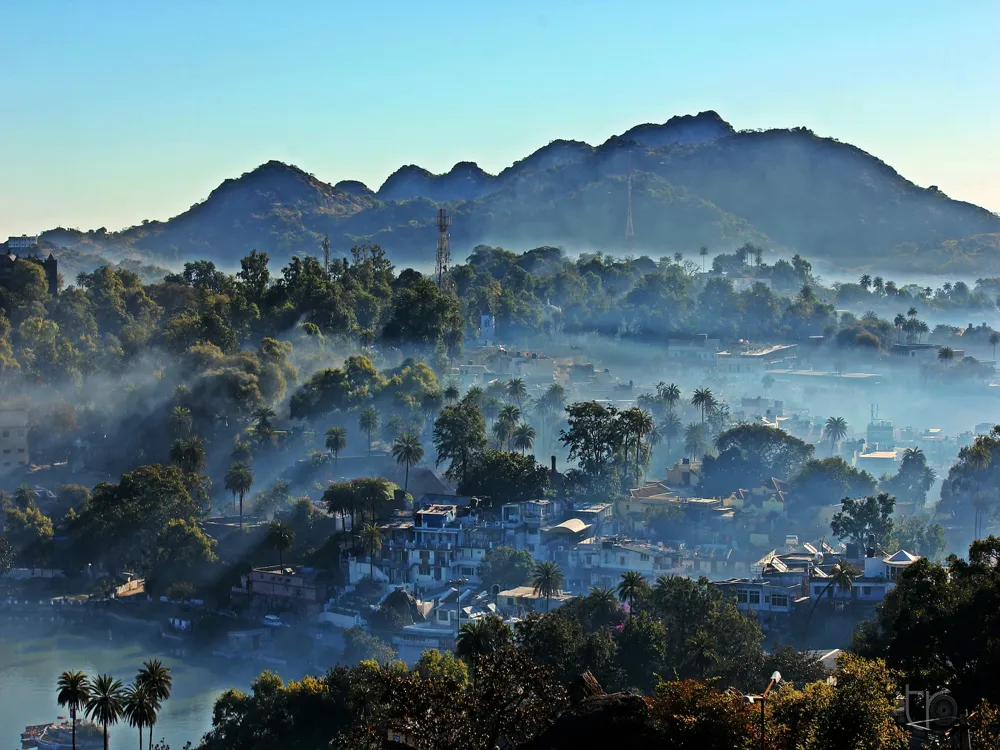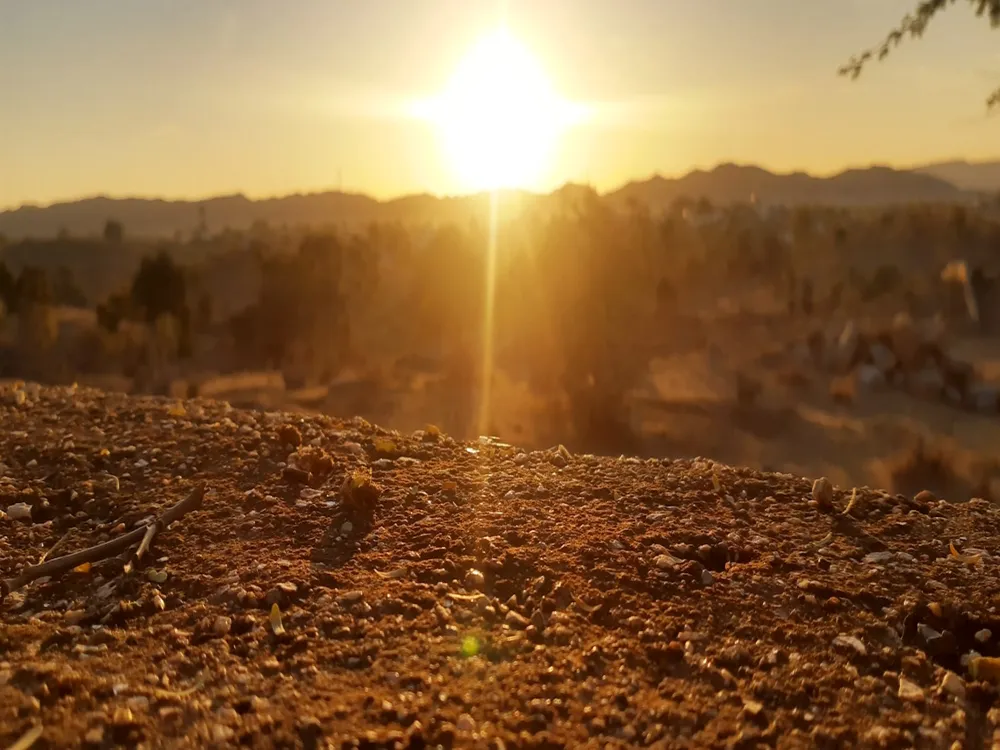Nestled in the vibrant city of Jodhpur, Rajasthan, Masuriya Hill Garden stands as a testament to the region's rich cultural heritage and natural beauty. This picturesque garden, perched atop Masuriya Hill, offers a panoramic view of the blue city, of Jodhpur. It's not just a garden; it's a symbol of Jodhpur's history and its people's love for nature. The garden is a perfect blend of natural flora and carefully designed landscapes, making it a popular destination for both tourists and locals. The history of Masuriya Hill Garden dates back to the era of the Rajputs when it served as a leisure spot for the royal families. Over the years, the garden has been maintained and developed, preserving its historical essence while embracing modernity. The lush green lawns, vibrant flower beds, and soothing ambiance make it an ideal spot for a peaceful retreat away from the hustle and bustle of city life. One of the unique features of Masuriya Hill Garden is its location. Situated on a hill, it offers an unrivaled view of the Jodhpur skyline, dominated by the majestic Mehrangarh Fort. The garden itself is a harmonious mix of natural and man-made elements. Tall trees provide a canopy of green, under which visitors can relax or take a stroll along the well-maintained pathways. As a haven for nature lovers, the garden is home to a variety of plant species, ranging from local to exotic. The vibrant colors of the flowers in bloom create a picturesque scene, perfect for photography enthusiasts. The garden also features several fountains and water bodies, adding to its serene atmosphere. The sound of water gently cascading down the fountains blends with the chirping of birds, creating a tranquil environment. Moreover, Masuriya Hill Garden is not just about natural beauty. It plays a significant role in the social life of Jodhpur. The garden hosts various cultural events and festivals, reflecting the rich traditions of Rajasthan. During these events, the garden comes alive with folk music, dance performances, and traditional Rajasthani cuisine, offering a glimpse into the vibrant culture of the region. The garden's significance extends beyond its beauty and cultural events. It serves as a green lung for the city, contributing to the environmental well-being of Jodhpur. The lush greenery provides a habitat for several species of birds and small wildlife, making it an important ecological spot in the city. In conclusion, Masuriya Hill Garden is not just a tourist attraction; it's a symbol of Jodhpur's heritage, a natural oasis, and a cultural hotspot. Its beauty, history, and cultural significance make it a must-visit destination for anyone traveling to Jodhpur. The architecture of Masuriya Hill Garden in Jodhpur is a beautiful amalgamation of traditional Rajasthani design and contemporary landscaping. The garden's layout and structures reflect the architectural heritage of Rajasthan while providing a modern recreational space for visitors. At the heart of the garden's design is the use of natural stone, a hallmark of Rajasthani architecture. The pathways, benches, and even some of the smaller structures within the garden are crafted from locally sourced stone, blending seamlessly with the natural surroundings. This use of stone not only reflects the traditional building methods of the region but also ensures durability and sustainability. One of the most striking features of the garden is its intricate jali work, a traditional form of stone latticework. These jalis are not just decorative; they also serve a practical purpose by providing shade and allowing the flow of cool breezes, making the garden a comfortable place to visit even during the hot summer months. The garden's design also includes several water features, such as fountains and small ponds. These water bodies are strategically placed to enhance the aesthetic appeal of the garden and to create a relaxing ambiance. The sound of water flowing adds a calming element to the garden, making it an ideal place for meditation and relaxation. Another notable aspect of the garden's architecture is the use of vibrant colors. The flower beds are carefully curated to ensure a riot of colors throughout the year. The use of colorful, indigenous flowers not only adds to the beauty of the garden but also promotes local flora. The garden also features a variety of sculptures and statues, many of which are inspired by local folklore and Rajasthani culture. These artworks add an artistic touch to the garden and serve as a reminder of the region's rich cultural heritage. In summary, the architecture of Masuriya Hill Garden is a perfect example of how traditional design elements can be integrated into modern landscaping. The garden's beauty lies in its ability to maintain the essence of Rajasthani architecture while providing a contemporary space for relaxation and cultural activities. The ideal time to visit Masuriya Hill Garden is during the cooler months of October to March. During this period, the weather is pleasant, and the garden is in full bloom, offering a mesmerizing experience. Visitors should bring a camera to capture the garden's beauty, a water bottle to stay hydrated, comfortable walking shoes, and a hat or umbrella for sun protection. Apart from exploring the garden, visitors can enjoy photography, picnics, and attending cultural events when they are held. Visitors should respect the local culture and traditions. Dress modestly and be mindful of cultural sensitivities, especially during religious or cultural festivals. It's important to maintain the cleanliness of the garden. Dispose of waste properly and avoid plucking flowers or damaging plant life. Reaching Masuriya Hill Garden in Jodhpur is quite straightforward. The garden is well-connected by road and can be easily accessed by local transport. Visitors can take a taxi or auto-rickshaw from any part of the city. For those driving their vehicles, there is ample parking space available near the garden. Additionally, the garden's location on Masuriya Hill makes it a prominent landmark, easily recognizable by locals, making it convenient for visitors to get directions. For tourists staying in central Jodhpur, the garden is just a short drive away, offering an escape into nature without having to travel far from the city center. Its accessibility makes it a popular choice for both tourists and locals looking for a peaceful retreat. Read MoreOverview of Masuriya Hill Garden, Jodhpur, Rajasthan
Architecture of Masuriya Hill Garden
Tips When Visiting Masuriya Hill Garden
Best Time to Visit
What to Bring
Activities to Enjoy
Cultural Etiquette
Environmental Consciousness
How To Reach Masuriya Hill Garden
Jodhpur Tourism
Masuriya Hill Garden
Jodhpur
Rajasthan
₹ 12,000 onwards
View jodhpur Packages
Weather :
Tags : Garden & Park
Timings : 7:00 AM - 9:00 PM
Time Required : Less than 1 hour
Entry Fee : INR 10,
Kids (below 5 years): Free
Planning a Trip? Ask Your Question
Jodhpur Travel Packages
View All Packages For Jodhpur
Top Hotel Collections for Jodhpur

Private Pool

Luxury Hotels

5-Star Hotels

Pet Friendly
Top Hotels Near Jodhpur
Other Top Ranking Places In Jodhpur
View All Places To Visit In jodhpur
View jodhpur Packages
Weather :
Tags : Garden & Park
Timings : 7:00 AM - 9:00 PM
Time Required : Less than 1 hour
Entry Fee : INR 10,
Kids (below 5 years): Free
Planning a Trip? Ask Your Question
Jodhpur Travel Packages
View All Packages For Jodhpur
Top Hotel Collections for Jodhpur

Private Pool

Luxury Hotels

5-Star Hotels

Pet Friendly










